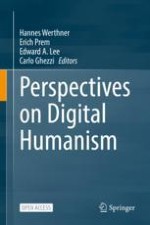
Open Access 2022 | OriginalPaper | Buchkapitel
Digital Humanism and the Limits of Artificial Intelligence
verfasst von : Julian Nida-Rümelin
Erschienen in: Perspectives on Digital Humanism
Aktivieren Sie unsere intelligente Suche, um passende Fachinhalte oder Patente zu finden.
Wählen Sie Textabschnitte aus um mit Künstlicher Intelligenz passenden Patente zu finden. powered by
Markieren Sie Textabschnitte, um KI-gestützt weitere passende Inhalte zu finden. powered by